10 Tips to Help Outdoor Cats During the Winter
If you're worried about the neighbourhood cats with winter just around the corner, there are a few things you can do to make their lives a little easier. Some can be done on a whim, while others will need a little more planning on your part.
1. Provide stray or feral cats with a shelter
Trust us, if it's too cold for you to be outside, it's too cold for stray or feral cats. One of the ways you can help them get through the chilly winter weather is by providing them with shelter. Our outdoor shelter is the perfect solution for stray cats needing a warm place at night or when it's raining. For extra warmth, line it with some shredded newspaper or straw. Don't use towels or blankets as these absorb moisture and can leave the cats feeling the cold even more.

Of course if budget is a concern you can set up your very own DIY shelter. This video shows you just how easy is it to make a shelter.
2. Make sure they have enough food

According to Alley Cat Allies, stray or feral cats need more food during the winter months. While dry food is always a safe bet, wet food is easier to digest. We recommend heating the food up before setting it outside. Just make sure it's not too hot.
3. Fresh water is a must
An essential part of stray cat care is making sure they always have access to clean, fresh drinking water. Unfortunately, outdoor cats will drink from puddles and gutters, which puts them at serious risk. Check the water bowl regularly, especially in the mornings, to make sure it's not frozen over. To stop water from freezing, you might want to top up drinking bowls with warm water.
4. Turn an outhouse into a cat shelter

If you're lucky enough to live in the countryside and have an outhouse of some kind, you could turn that into a home for community cats. Even though cats use their body heat to keep themselves warm, it's a good idea to place blankets and straw in the makeshift shelter. And don't forget to set up a feeding station with plenty of food and water.
5. Check around and under your car

The perfect shelter for a feral cat is under your car, in between the wheel walls or even under the bonnet. If you know of stray cats in your area, it's a good idea to do a complete check around, and under your car, before setting off in the morning.
Speaking of cars, if you have stray cats in your neighbourhood, it’s best not to use antifreeze in cold weather. It contains ethylene glycol, which is extremely toxic for animals when ingested. Unfortunately, it's also tasty and has a sweet smell, so cats will happily lap it up. Symptoms of antifreeze poisoning include:
- vomiting
- loss of balance
- lethargy or sluggishness
- difficulty breathing
- seizures
If an animal has been exposed to antifreeze, they must get veterinary care as soon as possible. Rock salt is also dangerous for outdoor cats. Often this is accidentally ingested when a cat licks its paws, and it can also get stuck between a cat's paws.
6. Trap, Neuter and Return
An unspayed outdoor cat can give birth to more than 20 kittens every year, which is why it's essential to trap, neuter and return stray or feral cats where possible. This programme encourages humanely trapping a feral cat, getting it neutered and then returning it to its colony.
Keeping Your Cat Safe During Winter
If your cat likes spending time outside, it might also be at risk during the colder, rainier months. Here are a few things you can do to keep your moggies safe in winter.
1. Make sure your moggy is microchipped
While a collar with an ID tag is a good idea, there is a chance that it might come off while your cat's exploring. We recommend microchipping your moggy for its safety and your peace of mind.
2. Use a reflective cat collar
If you've got an outdoor cat, then you definitely want to get it a reflective or high-visibility collar. Just make sure it has a quick release for your pet's safety.
3. Keep an eye out for poisoning
De-icing products and antifreeze are hazardous for outdoor cats. Always check your pet's paws to make sure there's nothing stuck between its feet. And be on the lookout for antifreeze poisoning. Even if you're not using it, cats that wander around outside are at risk if anyone in the neighbourhood uses these products.
4. Limit outdoor time
Cats must stay warm when the temperatures drop. If you have a sickly cat, a senior or a kitten in your care, it's best to keep them indoors as much as possible.
5. Keep your cats safe with an outdoor shelter
Cat shelters are a good idea if you have a pet that likes to spend a lot of time outdoors. Our self-heating cat shelters with microchip access keep unwanted visitors out while keeping your cats snug on cold winter days.
Sharing is definitely caring, especially when it comes to the welfare of stray or feral cats. If you know anyone looking after outdoor cats, feel free to send this article their way.
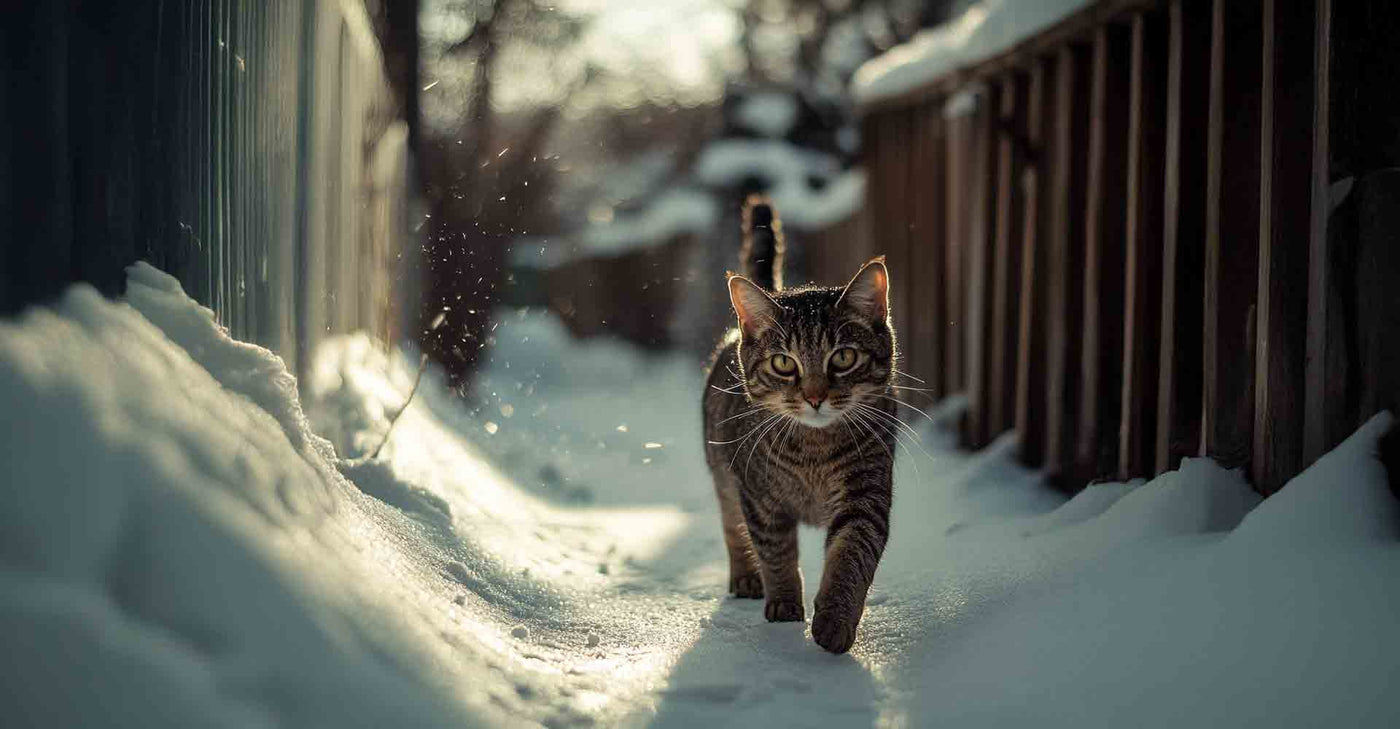

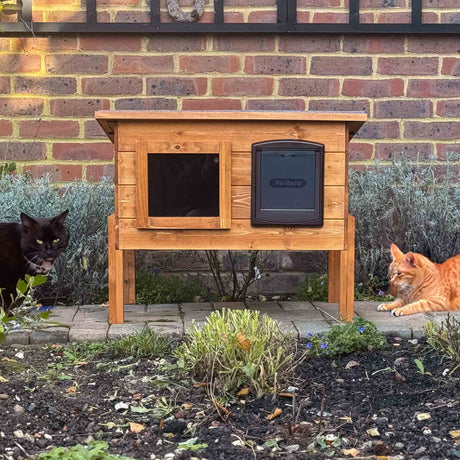
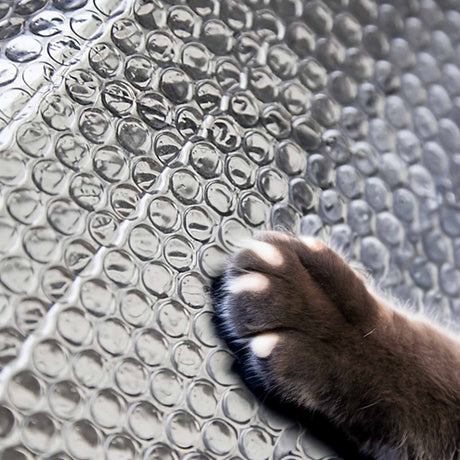
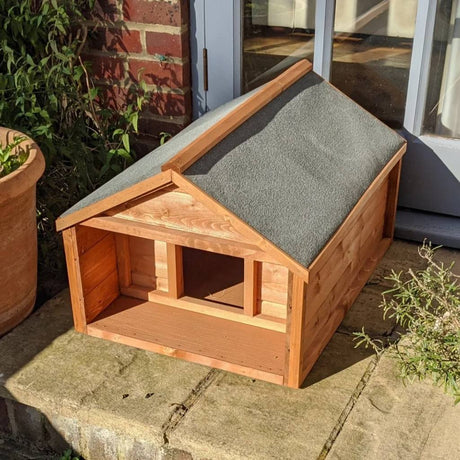
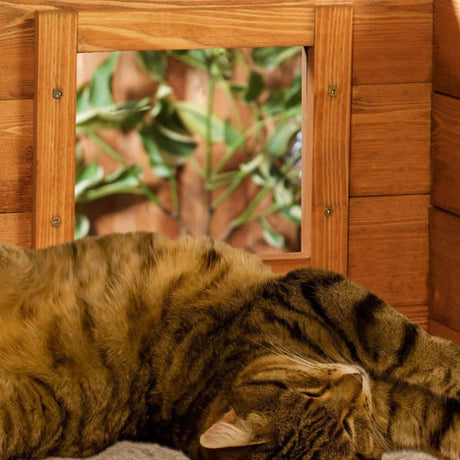
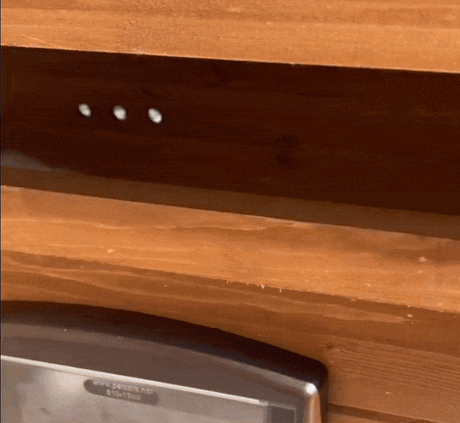

1 comment
Bought a cat shelter for a stray cat that had been abandoned by his owners when they moved., but no matter what we tried he would not go in it.So after about a month we decided to get him neutered and microchipped and take him in with our other tom.they still dont get on but it was it was one if the best choices we’ve ever made,He is happy under the shelter in the rain though.